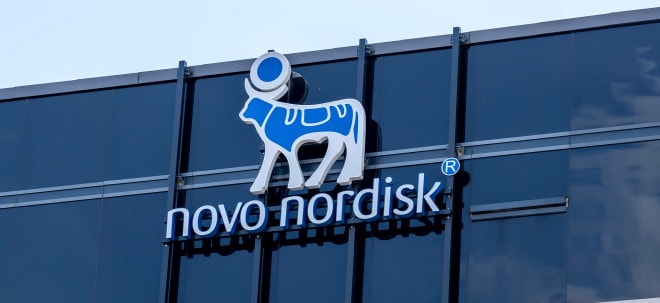Health and Fitness Club Market to Reach $102.3 Billion by 2024 in the short term and $234.8 Billion by 2034 Globally, at 8.8% CAGR: Allied Market Research
Urban lifestyles, increased emphasis on preventative care, and greater health awareness are the main factors driving the health and fitness club market. Customers of all ages are looking for individualized health programs, group sessions, and gym memberships. Technology integration has increased reach and engagement through wearables, fitness applications, and online courses.
WILMINGTON, Del., Nov. 6, 2025 /PRNewswire/ -- Allied Market Research published a report, titled, "Health and Fitness Club Market - Global Opportunity Analysis and Industry Forecast, 2025-2034", valued at $102.3 Billion in 2024. With a projected CAGR of 8.8% from 2025 to 2034, the market is expected to reach $234.8 Billion by the end of 2034. The growth of the market is also supported by a cultural shift toward wellness and active living, making it a dynamic and resilient industry.

Download Sample Pages of Research Overview:https://www.alliedmarketresearch.com/request-sample/A11813
Market Introduction:
The health and fitness club market includes a broad range of services meant to enhance general well-being, physical health, and quality of life. These clubs include wellness centers, boutique fitness studios, conventional gyms, and specialty training facilities that provide services including personal training, yoga, Pilates, aerobic exercises, and strength training. From athletes and fitness enthusiasts to people looking for assistance with weight management or rehabilitation, the market caters to a wide range of consumers. The market has grown significantly on a global scale due to rising awareness of the advantages of regular exercise and healthy living.
Demand has been further stimulated by urbanization, lifestyle-related health problems like obesity and cardiovascular disorders and rising disposable income. In addition, health clubs are changing to accommodate customer demands by adding innovative exercise equipment, providing hybrid training plans, and including wellness components such as recovery services, mental health support, and dietary advice. Fitness tracking, smartphone apps, and virtual training sessions have all improved accessibility and involvement, making technological integration a major trend.
The health and fitness club market is still expanding as more people look for all-encompassing approaches to wellness. Operators are implementing innovative, customized services, and flexible membership plans, fostering an atmosphere that encourages social contact, long-term health, and personal development In order to meet evolving needs.
Report Overview:
The health and fitness club market is segmented into service type and region. By service type, the market is divided into membership fees, total admission fees, personal training & instruction service, and others.
By region, it is analyzed across North America (U.S., Canada, and Mexico), Europe (Germany, UK, France, Italy, Spain, Russia, and the rest of Europe), Asia-Pacific (China, Japan, India, South Korea, Australia, Thailand, Malaysia, Indonesia, and rest of Asia Pacific), and LAMEA (Brazil, Argentina, South Africa, Saudi Arabia, UAE, and rest of LAMEA).
- By service type, the membership fees segment dominated the global health and fitness club market in 2024 and is anticipated to maintain its dominance during the forecast period.
Report Coverage & Details:
Report Coverage | Details |
Forecast Period | 2025–2034 |
Base Year | 2024 |
Market Size in 2021 | $102.3 Billion |
Market Size in 2032 | $234.8 Billion |
CAGR | 8.8 % |
No. of Pages in Report | 259 |
Segments Covered | Service Type and Region |
Target Region / Countries | North America (U.S., Canada, and Mexico), Europe (Germany, UK, Russia, France, Italy, Spain, and rest of Europe), Asia-Pacific (China, Japan, India, South Korea, Australia, and rest of Asia-Pacific), and LAMEA (Brazil, South Africa, Saudi Arabia, UAE, Argentina, and rest of LAMEA) |
Drivers |
|
Opportunity |
|
Restraint |
|
Factors Affecting Market Growth & Opportunities:
New opportunities have emerged and the health and fitness club market is expanding due to several factors. Consumers' growing health consciousness, which is being driven by the rise in lifestyle-related diseases, has increased interest in regular exercise and joining fitness clubs. More people may now obtain fitness services thanks to urbanization and increased disposable income, particularly in developing nations. The increasing popularity of fitness gurus and social media has also increased interest in leading an active and healthy lifestyle.
Employers are investing in fitness partnerships to increase employee productivity and well-being, which helps the market. Workplace wellness initiatives are also becoming more popular. Smart exercise equipment, smartphone apps, and online training sessions are examples of technological integration that has increased consumer involvement and enabled clubs to provide hybrid membership models that blend remote and in-person experiences. AI and data analytics-powered personalized exercise programs offer new possibilities for targeted services and member retention.
High-intensity interval training (HIIT), yoga, Pilates, and boutique fitness centers continue to draw particular customer segments looking for unusual experiences. Innovative, inclusive, and community-driven wellness solutions are anticipated to drive market expansion as health becomes a top priority for all age groups, including children and elderly people.
Buy This Research Report (250 Pages PDF with Insights, Charts, Tables, and Figures): https://www.alliedmarketresearch.com/checkout-final/fa67559e4a5ec5a21325eff5d1b4aea6
Major Challenges in Industry & Solutions:
Growth and profitability are impacted by several significant issues confronting the health and fitness club market. Member retention is a major problem as many clubs find it difficult to maintain long-term client engagement. Cancellations frequently come from factors including low motivation, poor results, or boring routines. Another issue that puts pressure on profitability, particularly for independent clubs, is the high cost of operations, which includes rent, employee pay, equipment maintenance, and utilities. In addition, there is competition from digital disruptions like virtual exercises and home fitness applications, which lessen the need for actual club subscriptions.
Clubs are implementing customized fitness solutions to overcome these obstacles, offering members individualized training regimens that maintain motivation through wearable integration and data analytics. A wider range of customers can be attracted to flexible membership options including pay-as-you-go plans or hybrid access to both in-person and virtual programs. Clubs are investing in energy-efficient equipment and systems and improving staff scheduling to lower operating costs. Retention is increased when the member experience is improved through wellness programs, progress monitoring, and community-building initiatives.
Enhancing hygiene standards and implementing contactless technologies have also been essential for restoring confidence after the outbreak. In a continuously changing environment, fitness clubs may better handle these obstacles and maintain their competitiveness by adopting innovative and customer-focused tactics.
Regional Insights
The health and fitness club market is growing in a variety of ways depending on the region, driven by urbanization, economic conditions, and cultural preferences. The U.S. leads in gym memberships and revenue, making North America one of the most developed markets. Strong disposable income, a well-established fitness culture, and a high knowledge of physical fitness all contribute to the market's consistent growth. The region is renowned for its innovative corporate wellness initiatives, boutique studios, and workout technologies. Similar patterns are seen in Canada, although on a smaller scale.
The market is dominated in Europe by nations such as Germany, the UK, and France due to their high levels of health consciousness and government encouragement of physical activity. There is fierce competition in Western Europe, where there are an increasing number of high-end clubs, specialty fitness studios, and inexpensive gyms. Eastern Europe continues to lag despite its growth due to its lower spending power and penetration rates. But in this subregion, workout habits are starting to change due to rising urbanization and health consciousness.
The health and fitness club market is expanding at the quickest rate in the Asia-Pacific region. Demand is being driven by an increase in the middle class, fast urbanization, and increased worries about lifestyle diseases. Australia, China, Japan, and India are among the major contributors. Fitness companies and chain expansions have exploded, especially in China and India. Moreover, there are more options for senior folks in Japan due to the country's established, however, aging fitness population. Australia, however, is very interested in hybrid membership models that combine online and in-person alternatives, as well as outdoor fitness.
Mexico and Brazil dominate the regional market in Latin America. Despite financial limitations, some nations are seeing a shift toward healthier living. Access to wellness services is becoming more widely available due to the growth of inexpensive fitness chains and mobile fitness apps.
Africa and the Middle East are developing markets with enormous promise. As part of their national health campaigns and economic diversification plans, the United Arab Emirates and Saudi Arabia are making significant investments in lifestyle infrastructure. In these areas, fitness centers frequently incorporate health and luxury amenities, making them appeal to affluent demographics. The market is still in its infancy in Sub-Saharan Africa, but it is anticipated to expand as urban populations and awareness of its health benefits rise.
Thus, Asia-Pacific and the Middle East are important regions to watch for future growth, driven by changing consumer behavior, economic development, and a growing focus on health and wellness, even though North America and Europe still dominate in terms of market maturity.
Enquiry Before Buying: https://www.alliedmarketresearch.com/purchase-enquiry/A325832
Key Players:
Product innovation and sustainability initiatives are key strategies in the health and fitness club market from 2022–2024. For example, Snap Fitness is opening its 350th club in Australia and has announced plans to open 25 more locations in Australia and New Zealand and 11 more in Asia by 2025 to take advantage of the growing health consciousness in the area.
The major players in the health and fitness club industry include The Bay Club Company LLC, UFC Gym, LLC., Crunch Fitness, LLC., Two Sports International Holdings Inc., Planet Fitness Inc., Equinox Holdings Inc., SATS Group, Gold's Gym International Inc., LTF Holdings Inc., and Self Esteem Brands LLC.
Key Strategies Adopted by Competitors
- In July 2024, the 35 XSport Fitness locations that LA Fitness purchases in Chicagoland, New York, and Virginia are merged under its brands (LA Fitness, Esporta Fitness, City Sports Club, Club Studio), and current membership agreements are respected while facility improvements and improved member experiences are made.
- In October 2024, the leading low-cost gym operator in the UK, PureGym, secured "stalking horse" status in a $105 million bid to purchase 67 Blink Fitness outlets in New York and New Jersey, setting the stage for the company to run more than 300 US locations by 2030.
- In August 2024, the opening of "The Wellbeing Garden," an immersive exercise project at Shanghai's Start Museum, by Lululemon and the artist team Graphic Rewilding is a prime example of the growth of upscale, neighborhood-focused health experiences in Chinese cities.
- In April 2024, Purpose Brands, which emerged by the union of Orangetheory Fitness and Self Esteem Brands (the parent company of Anytime Fitness), has announced an expedited franchise growth into China's key cities and completed its merger, establishing a network of 7,000 locations.
Explore AMR's Extensive ongoing Coverage on Consumer and Goods Domain:
- Pilates & Yoga Studios Market : Global Opportunity Analysis and Industry Forecast, 2024 - 2035
- Sports and Fitness Clothing Market : Global Opportunity Analysis and Industry Forecast, 2023–2032
- Fitness Equipment Market : Global Opportunity Analysis and Industry Forecast, 2017 – 2033
- Fitness Trackers Market : Global Opportunity Analysis and Industry Forecast, 2017 – 2023
- Fitness and Recreational Sports Centers Market : Global Opportunity Analysis and Industry Forecast, 2017 – 2023
- Connected Gym Equipment Market : Global Opportunity Analysis and Industry Forecast, 2017-2023
- Hosiery Market: Global Opportunity Analysis and Industry Forecast, 2022-2032
- Travel Bag Market: Global Opportunity Analysis and Industry Forecast, 2024 – 2033
- Intimate Wear Market: Global Opportunity Analysis and Industry Forecast, 2018-2025
- Industrial Protective Footwear Market: Opportunity Analysis and Industry Forecast, 2020–2031
- Linen Fabric Market: Global Opportunity Analysis and Industry Forecast, 2023 - 2032
- Diabetic Footwear Market: Global Opportunity Analysis and Industry Forecast, 2022 – 2031
About Us
Allied Market Research (AMR) is a full-service market research and business consulting wing of Allied Analytics LLP based in Wilmington, Delaware. Allied Market Research provides end-to-end solutions along with information, education, advocacy, and networking resources to SMEs and early-stage start-ups to bring excellence to their processes. In addition, we offer a nurturing environment required to develop and grow businesses, including business planning; virtual support; market intelligence; acquiring resources; and getting direct access to finance, suppliers, and other experts to boost the growth of businesses and entrepreneurs.
Our bundled and hassle-free business support systems are customized to meet the needs of SME consultants and industry leaders. Moreover, our large network of skilled consultants and experts help start-ups get the business on a roll.
Contact:
David Correa
1209 Orange Street,
Corporation Trust Center,
Wilmington, New Castle,
Delaware 19801 USA.
Int'l: +1-503-894-6022
Toll Free: +1-800-792-5285
Fax: +1-800-792-5285
help@alliedmarketresearch.com
Web: www.alliedmarketresearch.com
Allied Market Research Blog: https://blog.alliedmarketresearch.com
Follow Us on | Facebook | LinkedIn | YouTube
Logo: https://mma.prnewswire.com/media/636519/Allied_Market_Research_Logo.jpg

